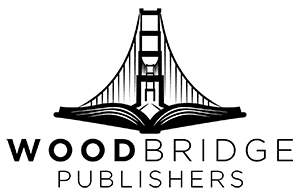Close your eyes and imagine this: the crisp scent of fresh paper, the satisfying weight of a book in your hands, the quiet rustle of turning pages. In our digital world, why does this experience still captivate millions?
As an author, you’re probably wondering: Is Print on Demand Worth It, Should I really invest in printing physical books when everyone’s glued to screens? The answer might surprise you. Let’s explore why printed books aren’t just surviving, they’re thriving, and how you can make them work for your writing career.
The Positive Aspects of Printed Books
The Reader’s Experience
Consider your most recent visit to a bookshop. Somehow, the sight and sound of stacks of colorful covers, the smell of freshly printed pages, and the quiet engagement of readers as they turn the pages is both calming and engrossing. A printed book begs the reader to engross themselves completely, in contrast to an eBook that coexists on a screen with social media alerts and diversions.
Research shows that reading from a physical book improves memory retention more than reading from a digital one. This highlights the continued importance of printed materials such as textbooks, workbooks, and professional manuals. Reading a printed book is more exciting and interesting since it uses more of your senses.
Print’s Credibility and Prestige
It’s no secret that a printed book has more gravitas, both in terms of physical and symbolic weight. A professionally printed book that is both attractive and well-designed conveys knowledge and authority. For this reason, many businesspeople, consultants, and public speakers use the publication of physical books to build their brands. Your reputation will soar once you have a physical book bearing your name on it.
A copy of your book is like a potent business card in the hands of an audience member. No matter the setting, a networking event, conference, or workshop, a paper book always makes a more impactful impression than an eBook.
The Predominance of Print Books in the Market
The publishing sector still mostly deals with printed books, even though eBooks are becoming more popular. In 2022, print books generated 76% of all book sales revenue, with eBooks contributing approximately 20%, according to the Association of American Publishers.
A Pew Research Center survey also indicated that while 30% of American adults use eBooks, 65% read at least one physical book year. Parents seeking screen-free reading experiences for their children, as well as students and professionals, continue to favor print.
Print is still the best medium for some literary works. Some books are better enjoyed in a tangible form than others; this is especially true of children’s books, photographic books, coffee table books, and recipes. A book that fits any of these descriptions would be perfect for printing.
Books That Last a Lifetime
Would you ever consider giving an electronic book as a birthday present? Very unlikely. However, a gorgeously bound hardcover featuring an emotional dedication? A gift like that will endure forever. Printed books are great for many reasons, including as mementos, investments, and topics of discussion. As time goes on, they become cherished heirlooms that fill a person’s house with joy.
The emotional value of a real book far outweighs that of a digital file. The collectible quality of printed books makes them valuable, whether they are first edition novels, autographed copies, or limited editions.
The Negative Aspects of Printed Books.
Higher Production Costs
Every physical book has a price tag unlike an eBook, which costs nearly nothing to replicate. Page count, format, paperback vs. hardcover, and print quality affect the cost of paper, printing, and binding. Add cover design, formatting, and distribution expenses as well; the cost soon mounts.
Writers have to ask themselves whether sales will allow them to recover these expenses. Although selling a printed book can be successful, it calls for a well-considered pricing and marketing plan.
Inventory and Logistics
Making books calls for handling actual inventory. Should you go with bulk printing, you will require a distribution strategy and storage capacity. Are you going to personally handle orders? Perhaps you will deal with a fulfillment service. Shipping periods and logistics might become obstacles to negotiate even with print-on- demand services.
Unlike an eBook, which can be given right away anywhere, a printed book calls for processing, packing, and shipping. Some self-published writers may be discouraged from selecting print by these practical issues.
Small Profit Margins
The profit margins for printed books are often smaller than those of eBooks since manufacturing expenses are incurred in printing. While a printed book usually leaves the author with 30–50% after printing and distribution expenses, an eBook sale may produce an 80–90% profit.
Selling directly, via your website, live events, or bulk orders, can, however, boost profit margins over selling through outlets like Amazon or bookshops.
Environment Issues
In a time when sustainability counts, some writers are concerned about how printed books would affect the surroundings. A book’s carbon footprint includes paper manufacture, ink consumption, and shipping among other things.
Still, there are plenty of environmentally friendly printing choices including carbon-offset printing, recycled paper, and plant-based inks. Selecting sustainable printing methods can help to lower environmental effect while still producing a premium output.
Print vs. Digital: What the Market Says
While digital books are convenient, print books remain popular, particularly for certain genres and audiences.
Self-Publishing Print Options: What Are Your Choices?
Print-on-Demand (POD)
Print-on-demand (POD) allows authors to print books as orders come in, reducing the need for inventory. Some popular POD platforms include:
- Amazon KDP (Kindle Direct Publishing) – Easy to use, prints on demand, and integrates seamlessly with Amazon’s marketplace.
- IngramSpark – Offers wider distribution to bookstores and libraries but requires an upfront setup fee.
- Lulu – Great for custom printing and unique formats.
Pros: No upfront bulk printing costs, no inventory needed, global reach.
Cons: Higher per-book printing costs, lower profit margins per sale.
Bulk Printing (Offset Printing)
Offset printing is best for authors planning large print runs (usually 500+ copies). This method lowers per-unit costs but requires upfront investment and storage space.
Pros: Lower cost per book, higher profit margins for bulk sales.
Cons: Requires storage, higher upfront costs, potential risk of unsold inventory.
Hybrid Publishing
Hybrid publishing combines elements of self-publishing and traditional publishing. Some companies offer packages that include editing, design, printing, and distribution, but they charge fees for these services.
Pros: Professional support, wider distribution.
Cons: Higher costs, potential loss of creative control.
The Costs of Printing Books: What to Expect
Before committing to printing, consider these key cost factors:
Printing Methods
Printing Type
Best For
Cost Per Unit
Minimum Order
Offset Printing
Large quantities (1,000+ copies)
1-5 per book
High upfront cost
Print-on-Demand (POD)
Small batches (1–100 copies)
5–15 per book
No minimum order
Digital Printing
Medium runs (100–1,000 copies)
3–10 per book
Lower than offset
Additional Expenses
Hidden Costs to Watch For
- ISBN & Barcode: ~$125 (U.S.)
- Cover Design: 200–200–1,500
- Editing & Formatting: 500–500–3,000
- Distribution Fees: 40–60% for retailers like Amazon & bookstores
- Storage & Shipping(if self-distributing)
- Returns & Damaged Copies(in traditional publishing deals)
- Marketing & Promotional Copies(free giveaways for reviews)
When Should You Print a Book?
Printing books makes sense if:
- You Have an Established Audience – If you already have an email list, social media followers, or a strong author platform, you’re more likely to sell physical copies.
- Your Genre Performs Well in Print – Fiction, memoirs, children’s books, and niche non-fiction categories tend to sell better in print.
- You Plan In-Person Events – Book signings, fairs, and speaking engagements benefit from having physical copies on hand.
- You Want Passive Income – Printed books can generate long-term sales through bookstores, online retailers, and bulk orders.
On the other hand, printing may not be worth it if:
- You’re a First-Time Author with No Marketing Plan – Without promotion, unsold inventory can become a financial burden.
- Your Book is Time-Sensitive – Trend-based or rapidly changing topics may not justify a print run.
- You Only Want Digital Reach – If your goal is quick eBook sales, printing may be an unnecessary expense.
Is Printing Books Worth It for You?
Who Benefits Most from Printed Books?
- Self-published authors who want a professional, tangible product.
- Entrepreneurs & speakers using books as branding tools.
- Educators & experts creating workbooks or academic texts.
- Artists & photographers showcasing visual work in high-quality print format.
Checklist: Should You Print Your Book?
✅ You have a target audience that prefers print books.
✅ Your book fits a genre that sells well in print (children’s books, cookbooks, etc.).
✅ You have a marketing strategy to sell physical copies.
✅ You’re willing to manage inventory or use print-on-demand services.
Wrapping Up
Printing books is still a worthwhile investment for many authors and businesses, but it’s essential to weigh the costs and logistics. If your goal is credibility, reader engagement, or niche-specific success, printing books can be a powerful tool. However, if maximizing profits with minimal upfront costs is your priority, digital books may be the better option.
So, is print on demand worth it for your book? Ultimately, the decision depends on your goals and resources. And when it comes to how much is my print worth, consider the long-term value it could bring to your brand and career.
Frequently Asked Questions
1. What are the hidden costs of printing physical books that most authors overlook?
While authors often focus on the per-book production cost, there are several hidden expenses that can add up. For instance, costs like ISBNs (around $125), cover design (ranging from $200 to $1,500), and editing (which can run between $500 to $3,000) should be factored into the budget. Additionally, distribution fees (40-60% for retailers) and returns from bookstores can significantly impact your profit margins. It’s crucial to plan for these extras to avoid any unexpected financial burdens.
2. Is Print on Demand (POD) truly cost-effective for small authors?
Print on demand can be an excellent option for authors with limited resources, but it comes with a trade-off. While it eliminates the need for bulk printing and inventory management, POD costs per unit (typically $5–$15) are higher than traditional bulk printing. As a result, you’ll earn a smaller profit margin per sale. The key to making POD work is to have a well-structured marketing plan and pricing strategy to ensure you sell enough copies to make it financially viable.
3. How much should I expect to sell my printed book for to break even?
The pricing of your printed book should cover production costs while ensuring you make a reasonable profit. Consider the printing cost per book, including production and distribution expenses, as well as any additional marketing costs. For example, if your book costs $8 to print and you sell it at $20, you’d net a profit of around $10 per sale after distribution fees. However, you’ll need to sell enough copies to cover your upfront costs like editing, design, and ISBNs. A break-even point is usually achievable if you have a solid sales strategy, but market positioning and target audience are key.
4. How can I calculate the true value of a printed book in today’s market?
To understand how much your printed book is worth, you need to consider both production value and market demand. For example, printed books in niche categories (e.g., children’s books, coffee table books, or cookbooks) may have a higher perceived value due to their visual and tactile appeal. Market trends can also impact the book’s worth: If it’s aligned with a growing trend or fills a unique gap in the market, its perceived value could be much higher. Finally, evaluate the cost per unit and your expected sales volume to determine your profit margin, which ultimately indicates the book’s financial worth.
5. Can printing books be profitable without traditional distribution channels?
Yes, printing books can be profitable even if you don’t go through traditional distribution channels like bookstores. If you have a strong personal brand, an existing audience, or you plan to sell at live events, you can bypass conventional retail channels and keep a higher percentage of the sales. Selling through your own website, speaking engagements, or direct-to-consumer platforms like Amazon KDP or Lulu can help you avoid high distribution fees and maximize your profits. The key is a robust marketing strategy and leveraging direct-to-reader sales channels.



